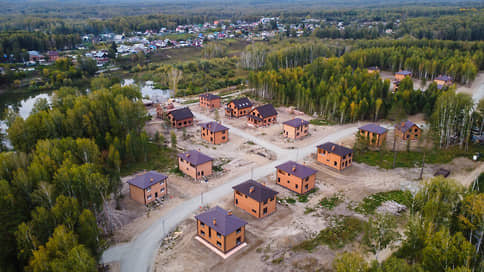The expansion of rural mortgages has increased the risk of redirecting funds to cities
[ad_1]

The expansion by the White House of the rural mortgage program and the doubling of the allowable loan amount, from 3 million to 6 million rubles, recently issued by a government decree, may carry the risks of an overflow of state support for the development of rural areas in the vicinity of cities. Offers to issue a rural mortgage on houses in cottage settlements are already on the market, and the innovation may shift the balance of interest of banks in this direction: mortgages in the suburbs are more liquid, and the program parameters do not allow separating them from truly rural housing. However, the Ministry of Agriculture does not consider this a problem, emphasizing that prices for building materials and, as a result, for rural housing are growing.
The latest government decisions related to state support for the agro-industrial complex indicate that the White House was satisfied with the results of the past agricultural year. From stimulating the sector, which showed significant growth in the 2022/23 season, the authorities switched to its systemic support (for more details, see Kommersant on July 4). In particular, the state program for the integrated development of rural areas and the rural mortgage launched as part of it in 2020 remain important for the development of the industry. By Decree No. 1055 of June 28, 2023, the government expanded its parameters: now, having taken such a mortgage, you can not only buy a finished house or build it under a contract agreement, but also buy an apartment in a multi-storey building in key settlements, where accelerated development of infrastructure is ensured, or buy a ready-made house kit and build it “on your own”. The loan ceiling has also been raised – from 3 million to 6 million rubles.
From the statistics provided to Kommersant by the Ministry of Agriculture, it follows that the demand for this type of mortgage is growing: in the first half of 2023, 7,818 loans worth 20.9 billion rubles were issued under the program, which is more than six times higher than the results of the same period 2022 (1273 loans for 3.4 billion rubles). The ministry emphasizes that the program contributes to the preservation of the rural population, as well as an increase in the share of comfortable housing in rural areas.
However, it is problematic to assess the real effectiveness of the mechanism for achieving the designated goals. The territorial scope of the program is wide: it is possible to purchase housing under it in rural areas, including on the territory of a rural settlement, a workers’ settlement, an urban-type settlement or a small town with a population of up to 30 thousand people. In fact, you can get a mortgage for the construction of houses in cottage settlements (there are such offers), and given that proximity to cities increases the liquidity of collateral, it is easier to get approval for such loans from banks.
However, the Ministry of Agriculture is not afraid of shifting the balance in favor of more expensive and close to cities housing. Referring to the data of the Ministry of Construction, the ministry emphasizes that the cost of construction per square meter has doubled over the past two years, while the cost of a house kit, taking into account assembly and connection to utilities, is a significant part of the costs. It follows from this that it is possible to buy with the help of a rural mortgage today exactly the housing that meets the objectives of the program.
Earlier, however, it was criticized in 2020 in the Accounts Chamber for the program’s inconsistency with its goals. They noted the actual inaccessibility of rural mortgages for villagers – half of all soft loans in the first nine months of the program were taken by townspeople (see Kommersant dated March 25, 2021). To bring the program in line with the original goals, the Ministry of Agriculture in 2021 introduced requirements for borrowers to register in purchased or built rural housing, but such a formal decision actually led to the fact that the growth of the rural population is no longer an indicator of the effectiveness of the program – registration in suburban housing of those who bought houses in cottage settlements, is unlikely to directly correlate with their intentions to engage in agriculture.
[ad_2]
Source link






